29 Stunning Ground Covers Perfect for Shady Spots
Shade-loving ground covers are the unsung heroes of landscape design, quietly transforming dark and challenging garden spaces into lush, verdant havens.
Gardens with limited sunlight often struggle to maintain vibrant plant life, but these remarkable botanical companions effortlessly carpet the ground with rich textures and elegant foliage.
Landscape architects and home gardeners have long recognized the transformative power of ground covers that can flourish in low-light environments, creating dynamic and visually appealing spaces beneath trees, along shaded pathways, and in woodland-inspired garden settings.
These resilient plants possess remarkable adaptations that enable them to thrive where other vegetation might struggle, developing specialized leaf structures and root systems that maximize minimal light absorption.
Their dense growth patterns not only provide aesthetic charm but also serve practical purposes like preventing soil erosion, suppressing weed growth, and maintaining moisture in challenging terrain.
Ground covers in shaded areas represent a sophisticated solution for gardeners seeking to maximize visual interest and ecological functionality in areas traditionally considered difficult to cultivate.
Purple Spikes Blue Lilyturf Groundcover
Blue Lilyturf stands out as a remarkable ground cover with grass-like leaves and charming purple flower spikes that bloom in springtime.
Liriope Muscari thrives in shaded garden areas, providing an excellent alternative to traditional grass lawns.
Native to East Asian regions like China and Japan, this resilient perennial grows up to 6 inches tall with dense, evergreen foliage.
Landscapers frequently use Blue Lilyturf in borders, pathways, and hard-to-grow areas where standard grass struggles.
Its adaptable root system helps stabilize soil and reduces weed growth effectively.
Minimal care requirements make it ideal for both novice and experienced gardeners seeking a reliable ground cover.
Rich green leaves create a lush carpet that remains attractive throughout changing seasons.
Golden Stripes Dancing in Shade
Golden Sweet Flag brings stunning golden-green foliage that instantly elevates garden landscapes near water sources.
Moisture-loving gardeners appreciate its adaptability to partially shaded environments with damp soil conditions.
Native to Asia, this ornamental grass creates beautiful ground cover with its distinctive striped leaves.
Landscape designers often select it for its low-maintenance characteristics and unique coloration.
These perennial plants thrive in zones 5-9, providing year-round visual interest with minimal care requirements.
Its graceful, arching leaves add texture and movement to garden beds surrounding ponds or streams.
Botanical experts recommend planting in spring or early summer for optimal growth and establishment.
Green Hostas Cascading Garden Sanctuary
Hosta plants reign supreme in shaded garden spaces, boasting impressive foliage that ranges from deep emerald to variegated green and cream patterns.
Summer brings delicate white and lavender blossoms that dance above the broad leaves, creating stunning visual interest in darker garden corners.
Native to northeast Asia, hostas thrive in cool, moist environments with minimal direct sunlight.
Landscape designers appreciate their low-maintenance nature and ability to fill awkward garden spaces with elegant greenery.
Certain varieties can grow remarkably large, spreading up to three feet wide and providing excellent ground cover.
Most hosta species prefer rich, well-draining soil and consistent moisture to maintain their lush appearance.
Golden Jenny Ground Cover Carpet
Creeping Jenny, a charming ground cover, weaves magic through gardens with its distinctive light green leaves that shimmer yellow under sunlight's caress.
Native to Europe, this low-growing perennial spreads rapidly across landscapes, creating lush green carpets with minimal effort.
Hardy in zones 3-9, Lysimachia nummularia thrives in moist, well-draining soil and requires little maintenance beyond occasional trimming to control its enthusiastic growth.
Its delicate yellow flowers bloom during summer months, adding subtle golden accents to garden spaces.
Landscapers often use this plant for erosion control, rock gardens, and border plantings where its trailing nature can cascade beautifully.
Soft Pink Hearts Dancing Woodland Floor
Barrenwort captivates gardeners with its elegant heart-shaped leaves and delicate spring blossoms, creating a magical ground cover in shaded woodland landscapes.
Native to Asia, this perennial plant reaches up to 18 inches tall and flourishes beautifully beneath trees and shrubs.
Epimedium, its botanical name, produces enchanting flowers in soft pink and white hues that dance among rich green foliage.
Woodland enthusiasts appreciate how this plant establishes dense, attractive coverage in areas with limited sunlight.
Companion planting works wonderfully with barrenwort, especially when paired with hellebores for a layered landscape design.
Its roots spread gently, creating a natural ground cover that prevents soil erosion and suppresses weed growth.
Lilac Silver Stripes Ground Cover
Wandering Jew plants captivate gardeners with their spectacular lilac and silver-striped foliage, creating a lush ground cover that thrives in shaded spaces.
Native to Mexico and South America, these stunning succulents spread quickly, forming dense mats of rich, colorful leaves.
Botanical experts recognize three primary species: Tradescantia zebrina, Tradescantia fluminensis, and Tradescantia pallida, each offering unique patterns and hues.
Small purple or white flowers occasionally bloom, adding delicate charm to the plant's already impressive appearance.
Low-maintenance characteristics make Wandering Jew an excellent choice for beginner gardeners seeking dramatic landscaping elements.
Indoor or outdoor environments suit these adaptable plants, which prefer indirect light and consistent moisture.
Humidity levels between 50-60% support optimal growth and vibrant leaf coloration.
Emerald Notched Woodland Fern Sanctuary
Leatherwood Fern emerges as a garden champion, thriving in shaded landscapes with its distinctive deep green, notched leaves that command attention.
Native to North America, this resilient evergreen species provides remarkable year-round texture and visual interest for garden enthusiasts.
Its robust nature allows it to complement other plants seamlessly, creating lush woodland-like environments.
Landscape designers often select this fern for its elegant structure and consistent verdant appearance.
Dense foliage creates a natural, appealing ground cover that remains attractive through multiple seasons.
Rich green fronds spread gradually, forming an enchanting carpet in woodland or shade garden settings.
Botanical experts recommend Leatherwood Fern for its low-maintenance characteristics and stunning aesthetic qualities.
Green Heart Ground Shield
Wild Ginger enchants gardeners with its remarkable ability to thrive in deeply shaded landscapes, spreading rapidly across forest floors and creating a luxurious emerald carpet.
Native to North American woodlands, this hardy perennial boasts distinctive heart-shaped leaves that form dense, low-growing clusters perfect for challenging garden spaces.
Woodland environments provide the ideal conditions for wild ginger, which prefers rich, moist soil and minimal direct sunlight.
Small, hidden flowers bloom near the plant's base, adding a subtle charm to its verdant foliage.
Botanical enthusiasts recognize wild ginger as an excellent ground cover that prevents soil erosion and suppresses weed growth.
Landscapes with limited sun exposure benefit tremendously from this resilient plant's natural spreading capabilities.
Soft Pink Impatiens Dancing Shade Gardens
Impatiens bloom radiantly in shadowy garden spaces, delivering eye-catching splashes of pink, red, white, and purple across lush landscapes.
Shade-loving perennials native to eastern Africa, these delicate plants flourish in cool, moist environments with minimal direct sunlight.
Compact growth habits make these plants ideal for borders, hanging baskets, and container gardens where limited sunlight restricts other flower options.
Botanical experts recommend planting impatiens in well-draining soil enriched with organic matter to support robust root development.
Careful watering helps prevent root rot, with morning moisture and afternoon shade providing optimal growing conditions.
Relatively low-maintenance plants, impatiens attract pollinators like butterflies and hummingbirds to garden spaces.
Emerald Heartleaf Cascade Garden
Ornamental Sweet Potato captivates gardeners with its dramatic heart-shaped leaves that range from golden hues to deep ebony, making it a standout plant for landscape design.
Botanical experts appreciate this fast-growing annual for its remarkable versatility in garden spaces, especially when used as a ground cover or border accent.
Partial shade provides the ideal growing conditions, allowing these plants to spread luxuriously across garden beds with minimal maintenance.
Tropical origins contribute to its robust nature, enabling it to tolerate various soil conditions and climate zones with remarkable resilience.
Landscape designers frequently select this plant for its striking color variations and ability to quickly fill empty spaces with lush, dynamic foliage.
Gardening enthusiasts can expect these plants to reach approximately 6-12 inches in height while spreading up to 3 feet wide, creating impressive visual impact.
Purple Velvet Cascading Garden Carpet
Purple Heart offers gardeners a mesmerizing ground cover with rich, deep purple foliage that electrifies landscape designs.
Native to Mexico, this resilient plant thrives in partial shade and quickly spreads to create a lush, eye-catching carpet of color.
Its trailing stems and elongated leaves provide dramatic visual interest in gardens, rock borders, and container plantings.
Botanical experts recognize Tradescantia pallida as its scientific name, highlighting its unique characteristics and origins.
Small pink flowers occasionally bloom during summer months, adding subtle contrast to the intense purple leaves.
Moderate watering and well-draining soil help this plant maintain its stunning appearance and robust growth.
Gardening enthusiasts appreciate Purple Heart for its low-maintenance nature and ability to withstand various climate conditions.
Landscapers often use this versatile plant to create dramatic ground cover or as an accent in mixed plant arrangements.
White Flowers Green Woodland Ground Cover
Bunchberry captivates gardeners with its delicate white flowers and lush green foliage, thriving in shaded woodland landscapes across North America.
Medicinal properties make this perennial ground cover a valuable addition to native plant gardens.
Native tribes historically used the plant's roots and berries for traditional healing practices.
Delicate white blossoms emerge in spring, creating a carpet-like effect on forest floors.
Bright red berries follow the flowers, providing visual interest and attracting local wildlife during summer months.
Moist, well-drained soil and consistent water support healthy growth in cooler, shaded environments.
North American woodland regions offer ideal conditions for this low-growing plant.
Botanical enthusiasts appreciate bunchberry for its versatile nature and subtle beauty.
Purple Spikes Carpet Green Shade
Creeping Liriope thrives as a resilient ground cover, flourishing beautifully in shaded garden areas beneath mature trees.
Purple flower spikes emerge in spring, adding delightful color to dark landscape spaces.
Minimal maintenance requirements make Liriope an excellent choice for low-effort landscape design.
Native to East Asian regions like China and Japan, this perennial plant adapts well to various soil conditions and tolerates moderate drought.
Landscapers appreciate its ability to control erosion and provide consistent ground coverage.
Spring pruning helps stimulate fresh growth and maintains the plant's attractive appearance.
Dense root systems make Liriope an exceptional option for stabilizing slopes and preventing soil loss.
Pristine White Bells Dancing Softly
White Inside-Out Flower, native to North America, captivates gardeners with its unique bell-shaped blossoms that cascade like elegant white lanterns during early spring.
Delicate petals fold backward, revealing an intriguing silhouette that distinguishes this woodland perennial from other shade-loving plants.
Successful cultivation requires moist, well-drained soil and partial to full shade conditions typical of woodland environments.
Mature plants reach approximately 12 to 18 inches tall, forming graceful clusters that add soft texture to garden landscapes.
Native plant enthusiasts appreciate its ecological value, as the flower attracts pollinators like bees and provides natural ground cover in woodland settings.
Shade gardens benefit from its lush green foliage and charming white flowers that emerge before many other spring bloomers.
Botanical experts recommend planting these perennials near woodland edges or underneath deciduous trees where filtered sunlight creates ideal growing conditions.
Green Velvet Ground Cover Delight
Cuban oregano flourishes as a resilient herb treasured by gardeners for its lush, velvety green leaves edged in delicate white.
Mediterranean and tropical regions embrace this robust plant for its remarkable culinary and medicinal potential.
Fragrant leaves release an intense, peppery aroma when crushed, making it a prized ingredient in Mexican and Caribbean cooking.
Small pink and lilac flowers emerge among its dense foliage, adding subtle visual interest to garden spaces.
Shade-loving gardeners appreciate its adaptability, thriving beautifully in partially protected environments.
Low maintenance requirements make this herb an ideal choice for novice and experienced plant enthusiasts alike.
Propagation happens easily through stem cuttings, allowing quick expansion of herb collections.
Native to southern Asia, Cuban oregano continues to charm gardeners worldwide with its versatile nature and distinctive flavor profile.
Green Fern Fortress of Shade
Christmas ferns showcase deep emerald foliage that remains lush throughout cold winter months, creating dramatic ground coverage in woodland landscapes.
Native to eastern North America, these resilient perennials flourish effortlessly in shaded forest environments where many plants struggle to survive.
Dense, leathery fronds spread into thick clusters, forming natural carpets that provide excellent erosion control on sloping terrain.
Their remarkable adaptability allows them to thrive in various soil conditions, from rocky to sandy compositions.
Landscape designers frequently select these ferns for their reliable performance in challenging shade environments.
Mature plants can reach approximately 2 feet tall, creating elegant understory groundcover in native garden designs.
Azure Ground Blooming Living Carpet
Blue Star Creeper emerges as a garden gem, rapidly spreading its delicate pale-blue blossoms across landscapes with remarkable ease.
Tiny leaves intermingle with delicate flowers, creating a dense, carpet-like texture that transforms empty spaces into living art.
Low-maintenance and resilient, this plant conquers rocky terrain and fills garden gaps with minimal effort.
Its compact growth habit makes it ideal for paths, between stepping stones, and along garden borders.
Landscape designers appreciate its quick-spreading nature and ability to soften hard edges with gentle blue hues.
Water-wise and adaptable, Blue Star Creeper requires little care while providing maximum visual impact.
Native to regions with moderate climates, this plant brings a serene, natural elegance to outdoor spaces.
Blue-Violet Ivy Carpets Woodland Floor
Ground Ivy, scientifically known as Glechoma hederacea, captivates gardeners with its charming mint-family characteristics and resilient nature.
Native to Europe, this low-growing perennial spreads quickly through underground runners, creating a lush green carpet in shaded landscapes.
Its aromatic leaves release a distinctive minty fragrance when crushed, making it a sensory delight for plant enthusiasts.
Ground Ivy tolerates various soil conditions and thrives in areas where other plants struggle, such as under trees or in damp, shaded regions.
Historically, herbalists used the plant for medicinal purposes, treating respiratory issues and inflammation.
Landscapers often recommend Ground Ivy for erosion control and as a natural ground cover in challenging terrain.
Magenta Hearts Dancing in Shade
Spotted Dead-nettle captivates gardeners with its enchanting heart-shaped leaves and stunning magenta, pink, or white blossoms that create a mesmerizing ground cover.
Native to Europe, this charming perennial thrives in shaded garden spaces, spreading rapidly to form dense, attractive carpets with minimal effort.
Lamium maculatum, its scientific name, belongs to the mint family and provides exceptional ornamental value for landscaping challenges.
Shade gardens benefit tremendously from its colorful foliage and delicate flowers that bloom from spring through early summer.
Partial to full shade environments suit this plant perfectly, making it an ideal choice for woodland-style landscapes or areas under trees.
Hardy in zones 4-8, spotted dead-nettle tolerates various soil conditions and requires little intervention once established.
Verdant Forest Floor Green Carpet
Sweet Woodruff delights gardeners with its enchanting woodland charm, spreading rapidly across shaded garden spaces and creating a verdant carpet of delicate green leaves.
Native to Europe, this perennial herb grows effortlessly under trees and in woodland settings, requiring minimal care and thriving in low-light conditions.
Clusters of tiny white star-shaped flowers emerge in late spring, adding subtle elegance to its dense green foliage.
Fragrant leaves release a sweet hay-like scent when crushed, making it a sensory delight for garden enthusiasts.
Traditional German cultures have long used this herb in May wine and herbal teas, celebrating its distinctive aroma and medicinal properties.
Small plants typically reach 6-12 inches tall, forming dense mats that suppress weeds and prevent soil erosion.
Purple Petals Golden Heart Hellebore
Lenten rose captivates gardeners with its dramatic purple cup-shaped flowers and golden yellow stamens, standing out as a remarkable perennial for shaded landscapes.
Helleborus orientalis blooms during late winter and early spring, offering rich color when most gardens appear dormant.
Native to mountain regions of Greece and Turkey, this hardy evergreen plant flourishes in woodland settings with minimal sunlight.
Cool temperatures do not deter its remarkable flowering performance, making it a cherished addition to shade gardens.
Mature plants typically reach 12-15 inches tall with broad, leathery leaves that remain green year-round.
Mediterranean origins contribute to its exceptional resilience in challenging growing conditions.
Landscape designers recommend planting Lenten rose in rich, well-draining soil with consistent moisture for optimal growth and stunning floral displays.
Green Mint Carpet Garden Spread
Gardens come alive with mint's magical presence, offering more than just a delightful aroma.
Thriving in shaded spaces, this resilient perennial spreads rapidly through moist, well-drained soil landscapes.
Lush green leaves create a stunning carpet that transforms garden beds with minimal effort.
Mint varieties include peppermint, spearmint, and chocolate mint, each bringing unique flavors and characteristics to outdoor spaces.
Propagation happens effortlessly through root divisions or stem cuttings, making it an ideal plant for beginners.
Native to Europe and Asia, mint adapts quickly to different climate conditions and soil types.
Medicinal properties and refreshing taste make this herb a top choice for herb enthusiasts and landscape designers alike.
Golden Petals Dancing Through Shade
Lamiastrum galeobdolon, commonly known as Yellow Archangel, boasts magnificent yellow tube-shaped flowers that burst across woodland landscapes during spring's delicate awakening.
Native to European forests, this shade-tolerant plant spreads rapidly through underground runners, making it an excellent choice for challenging landscape areas with limited sunlight.
Woodland garden enthusiasts appreciate its ability to control erosion and provide dense ground cover in areas where other plants struggle to thrive.
Careful cultivation requires monitoring its aggressive spreading tendencies, as it can quickly dominate surrounding vegetation if left unchecked.
Ideal planting locations include forest edges, shaded slopes, and areas with rich, well-draining soil that mimics its natural woodland habitat.
Indigo Bugleweed Carpet Garden Magic
Bugleweed (Ajuga reptans) captivates gardeners with its mesmerizing indigo-blue flowers that create a stunning ground cover in shaded or partially sunny landscapes.
Native to Europe, this low-growing perennial spreads quickly through underground runners, forming dense mats that suppress weeds and prevent soil erosion.
Hardy in zones 3-9, bugleweed withstands challenging conditions and requires minimal maintenance, making it an ideal choice for woodland gardens, rock gardens, or challenging terrain.
Its compact growth habit reaches only 4-6 inches tall, allowing it to function perfectly as a border plant or ground cover beneath trees and shrubs.
Silver-Spotted Saxifrage Rocks Garden
Creeping Saxifrage captivates gardeners with its enchanting silver-dappled foliage and delicate white flower clusters, making it a prized ground cover for challenging landscapes.
Rock gardens and shaded spaces become magical when this resilient plant takes root, spreading its intricate mat of round leaves.
Native to mountainous regions across Europe, this perennial thrives in rocky terrain and adapts beautifully to diverse environmental conditions.
Low-growing and compact, Saxifrage creates a stunning carpet that softens harsh garden edges with its intricate texture.
Minimal maintenance requirements make this plant ideal for both novice and experienced landscape designers seeking natural ground coverage.
Small white blossoms emerge in late spring, adding a gentle luminosity to garden spaces and attracting pollinators like bees and butterflies.
Periwinkle Waves of Purple Blue
Native to Europe, this resilient ground cover effortlessly conquers challenging landscape areas where other plants struggle to survive.
Periwinkle grows equally well in full sunlight and dense shade, making it an ideal choice for difficult garden spots that need quick coverage.
Hardy perennials like this plant establish roots rapidly, preventing soil erosion and suppressing unwanted weed growth.
Landscapers appreciate its low-maintenance characteristics, as the plant requires minimal care once established in appropriate conditions.
Mature plants typically reach 4-8 inches tall with a potential spread of several feet, creating dense mats of attractive greenery.
Pink Petals Dancing Through Woodland Shade
Wild Geranium captures gardeners' hearts with delicate pink to lavender blossoms that dance among woodland landscapes.
Pollinators adore these charming flowers, especially butterflies seeking nectar in shaded garden spaces.
Native to North American forests, this perennial plant spreads elegantly across woodland floors with minimal gardener intervention.
Hardy plants survive in partial shade and adapt to various soil conditions without demanding extensive care.
Delicate five-petaled flowers emerge in spring, creating soft carpets of color beneath tree canopies.
Botanical enthusiasts appreciate its natural ground cover potential for challenging garden areas.
Root systems help prevent soil erosion while adding aesthetic appeal to native landscapes.
Mature plants typically reach 12-18 inches tall, making them perfect for understated garden design.
Yellow Daisies Dancing in Shade
Golden Star Grass delights gardeners with its charming yellow daisy-like blooms that illuminate shady garden spaces during spring and late summer.
Native to North America, this compact ground cover spreads effortlessly through rhizomes, creating dense carpet-like patches in woodland settings.
Perennial enthusiasts appreciate its low-maintenance nature and ability to thrive in challenging light conditions where other plants struggle.
Landscapers value its adaptability in rock gardens, border edges, and naturalized areas with limited sunlight exposure.
Reaching approximately 6-12 inches tall, Golden Star Grass forms attractive green mats adorned with brilliant golden flowers that dance above delicate foliage.
Plant these hardy perennials in well-draining soil with partial shade for optimal growth and continuous flowering.
Botanical experts recommend spacing plants 8-12 inches apart to encourage healthy spread and maximum visual impact.
Green Carpet Spreads Woodland Floor
Japanese spurge (Pachysandra terminalis) emerges as a garden champion for shaded landscapes, spreading its lush deep green carpet beneath trees and shrubs with remarkable ease.
Dense clusters of glossy leaves create a stunning ground cover that thrives in challenging light conditions.
Small delicate white flowers peek through the foliage during spring, adding subtle elegance to its appearance.
Native to Japan and parts of China, this hardy perennial grows quickly and requires minimal maintenance.
Drought resistance makes it an exceptional choice for gardeners seeking low-effort landscaping solutions.
Its compact growth habit typically reaches 6-10 inches in height, forming a uniform green blanket.
Landscape designers frequently recommend this plant for its adaptability and consistent performance in woodland settings.

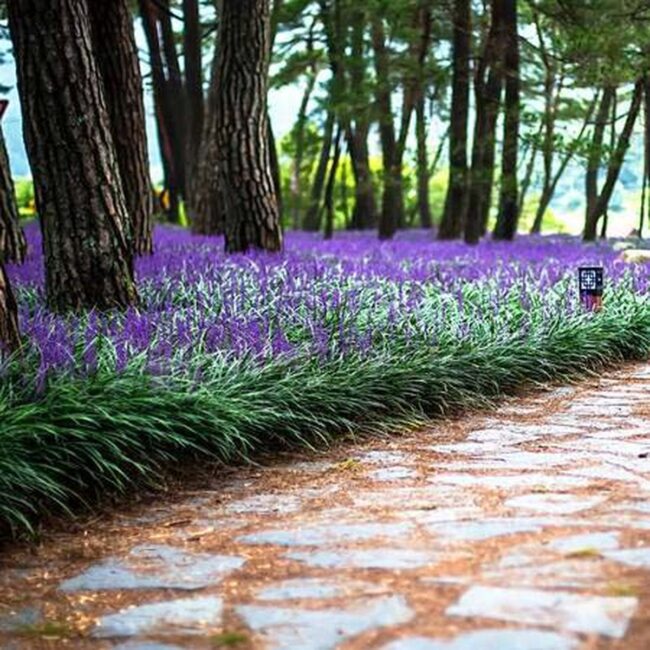
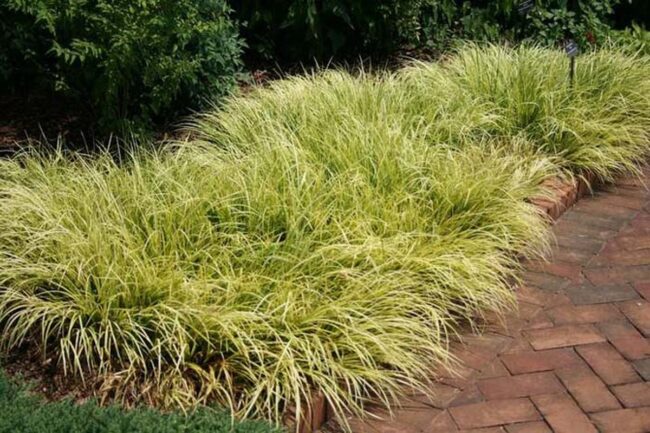
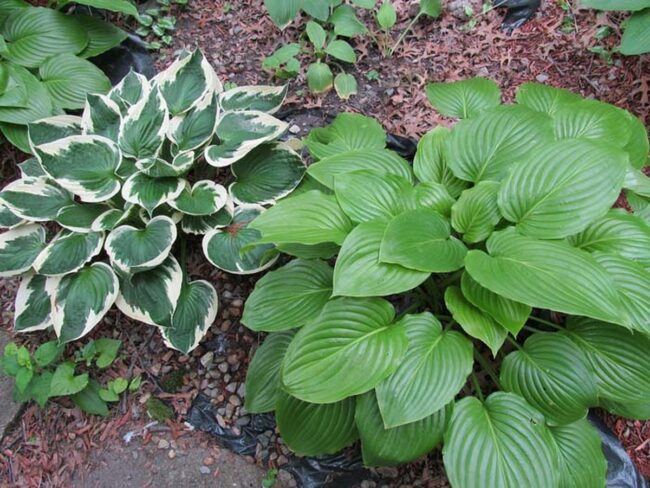
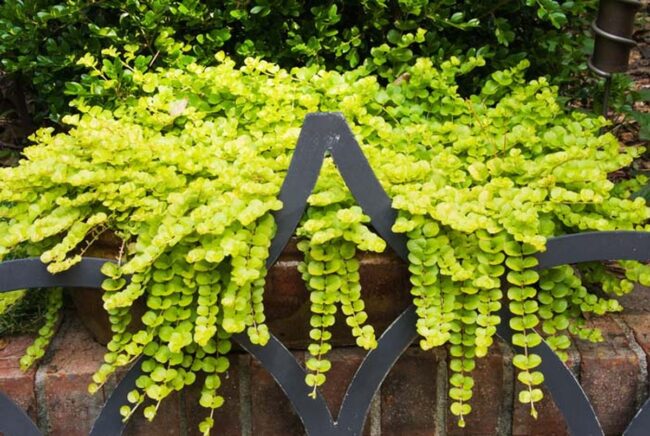
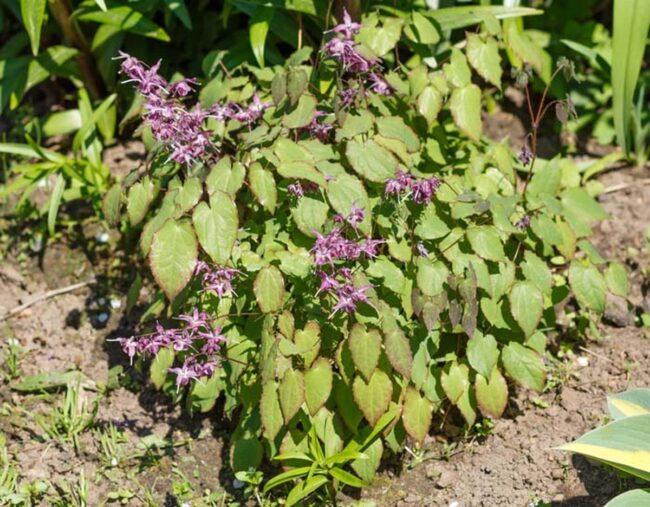
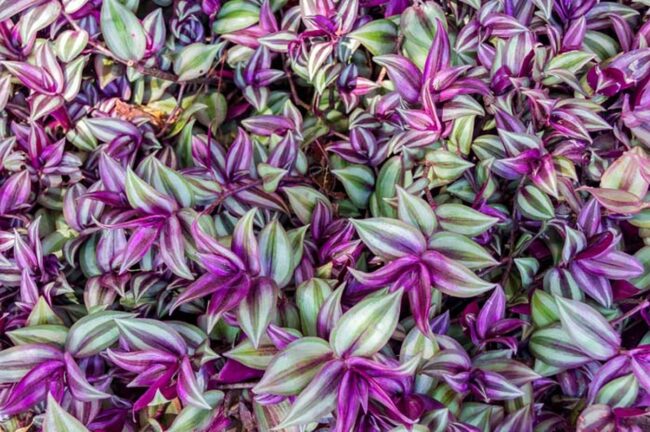
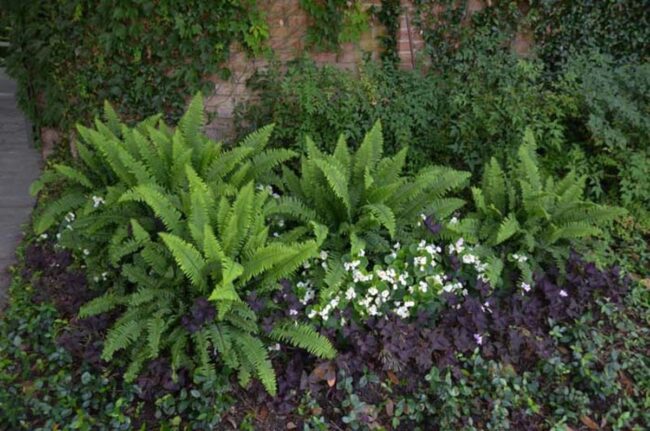
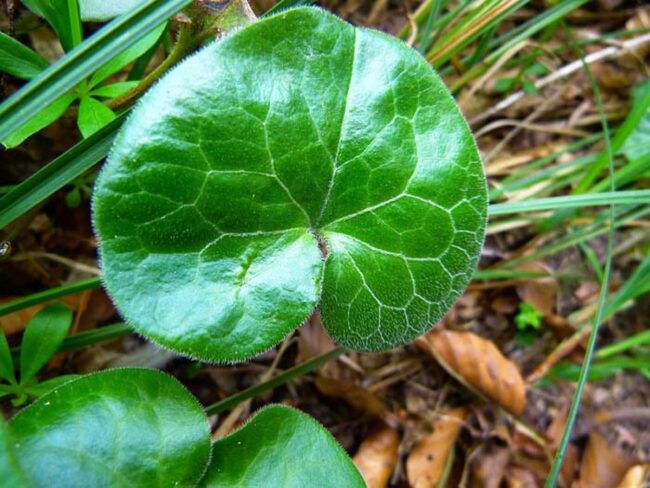
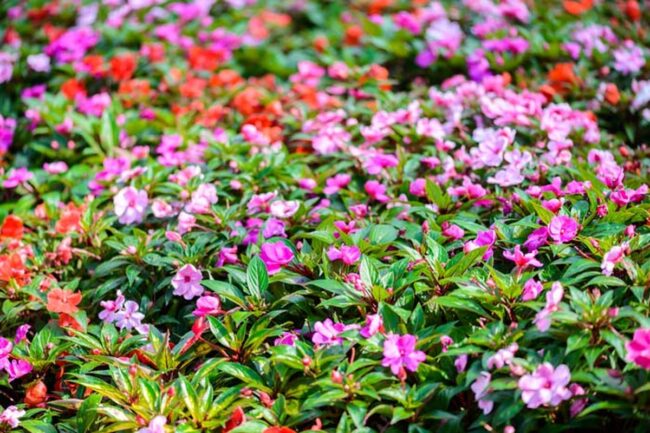
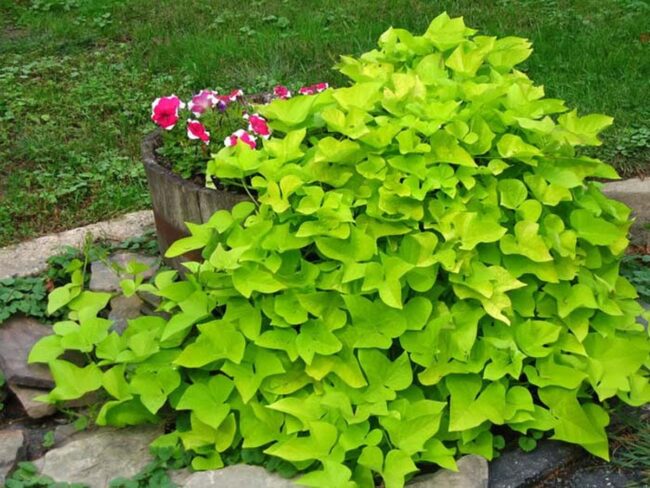
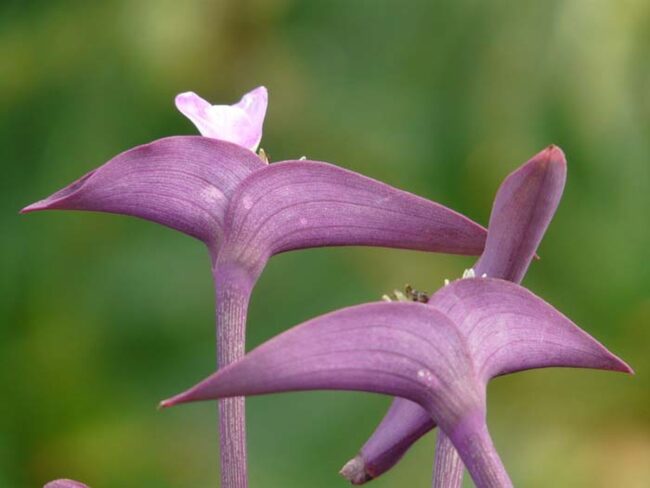
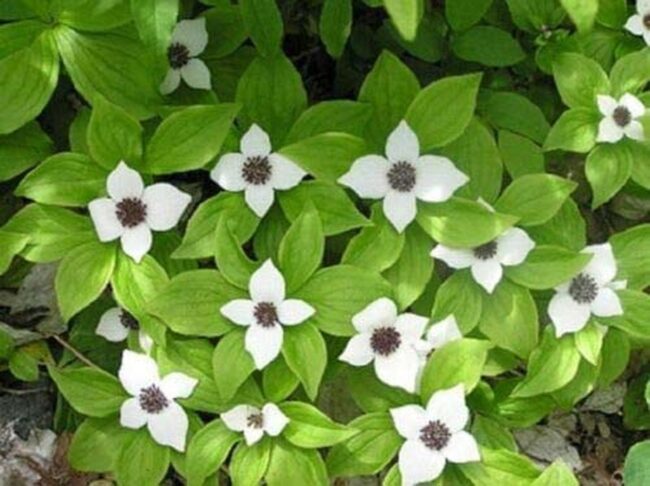
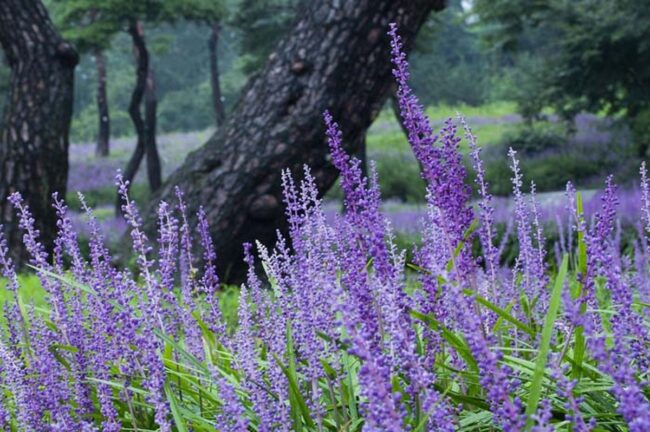
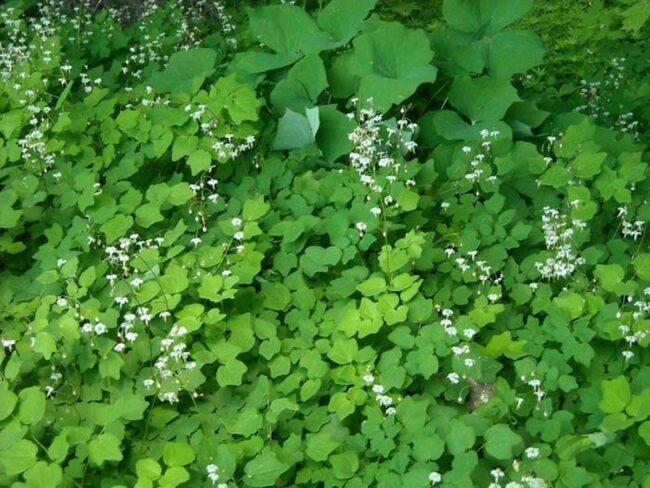
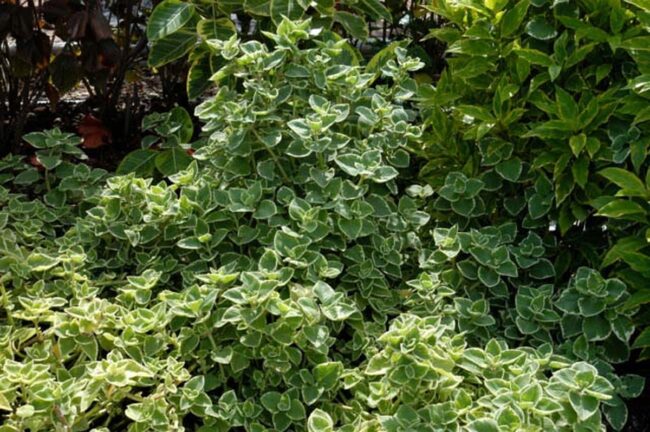
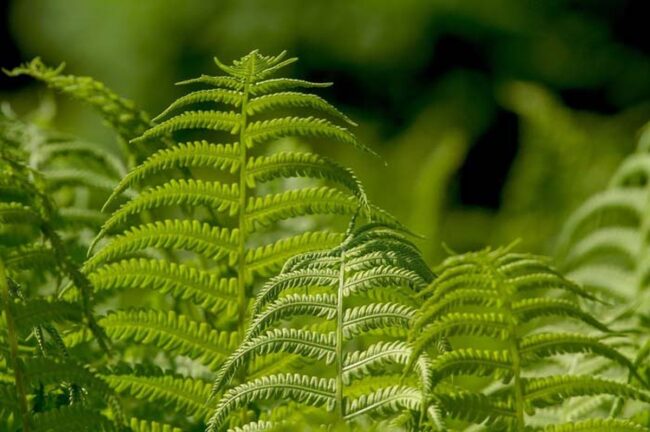
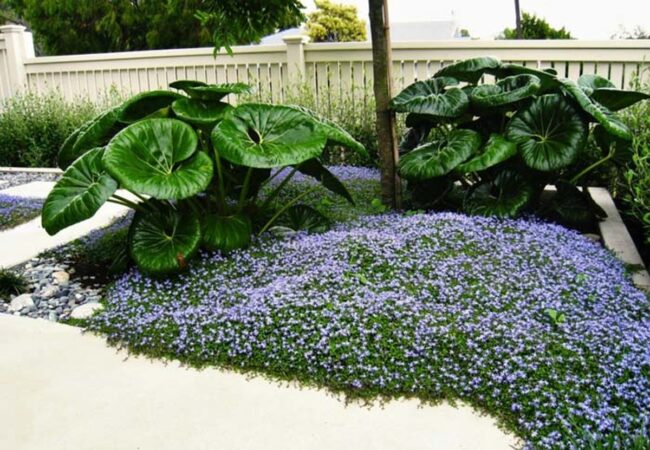
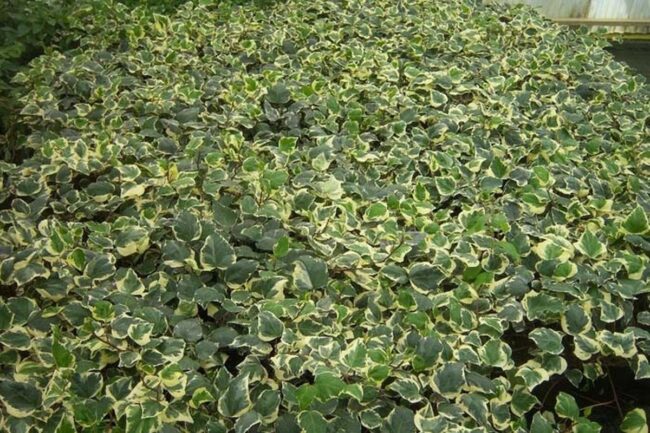
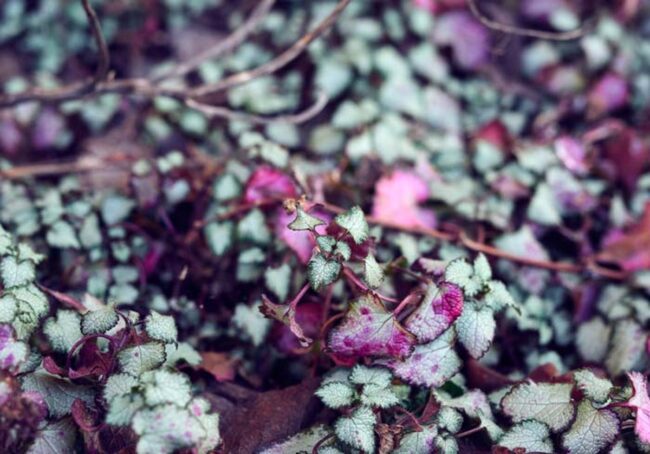
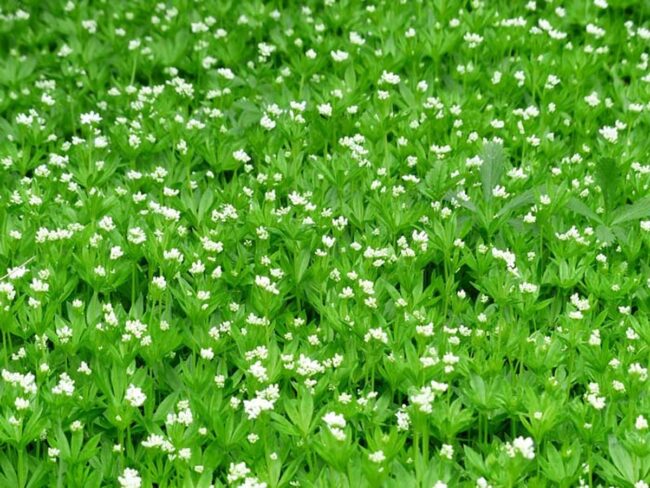
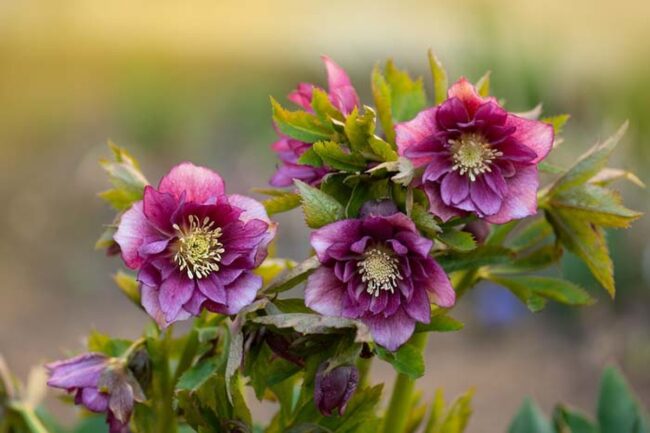
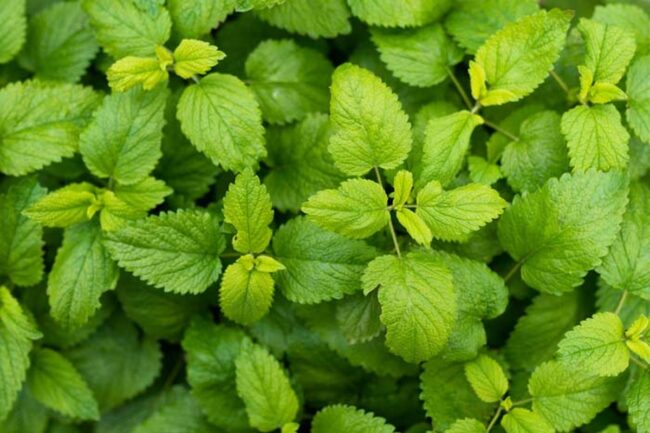
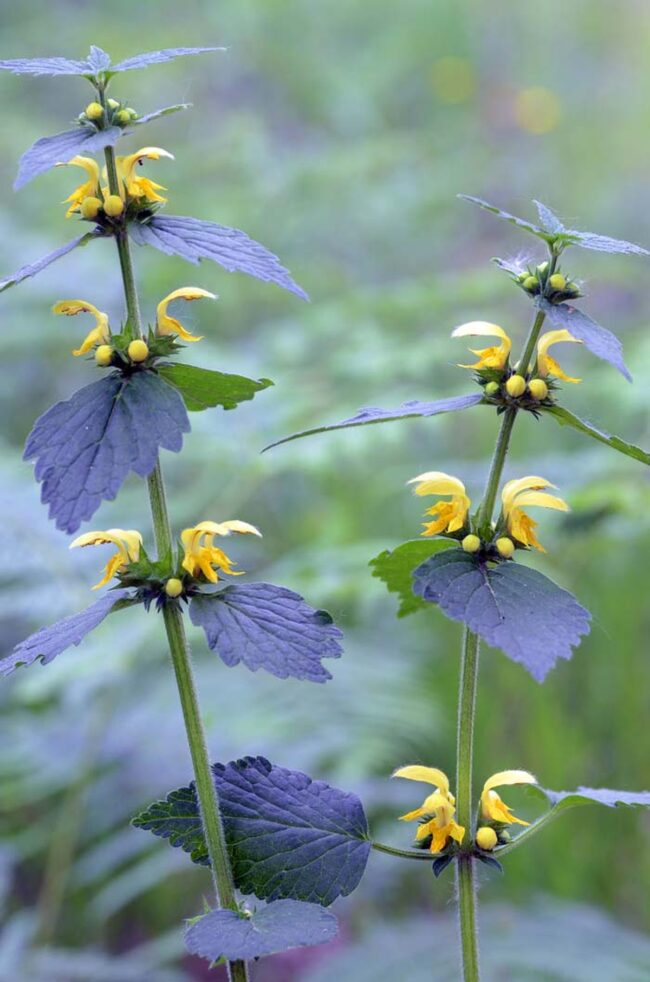
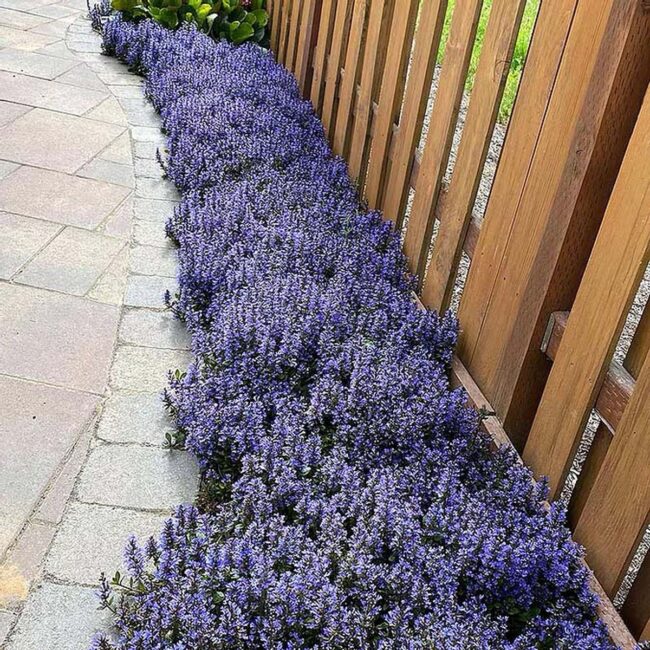
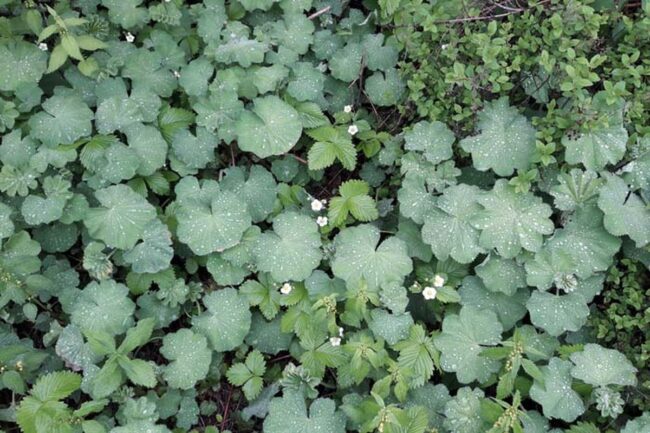
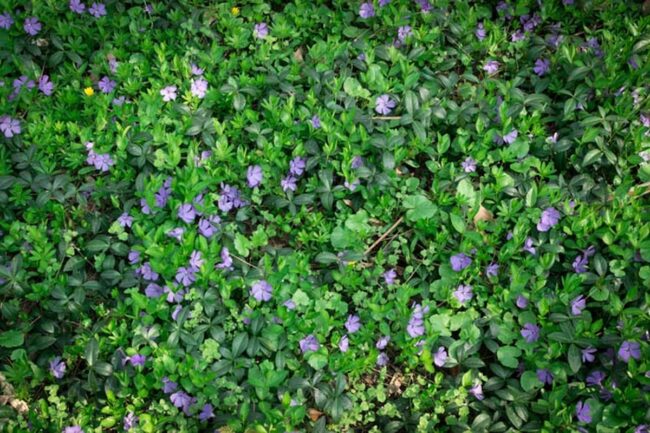
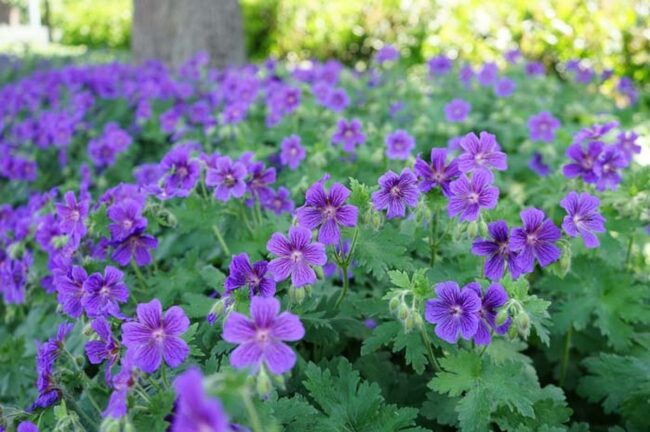
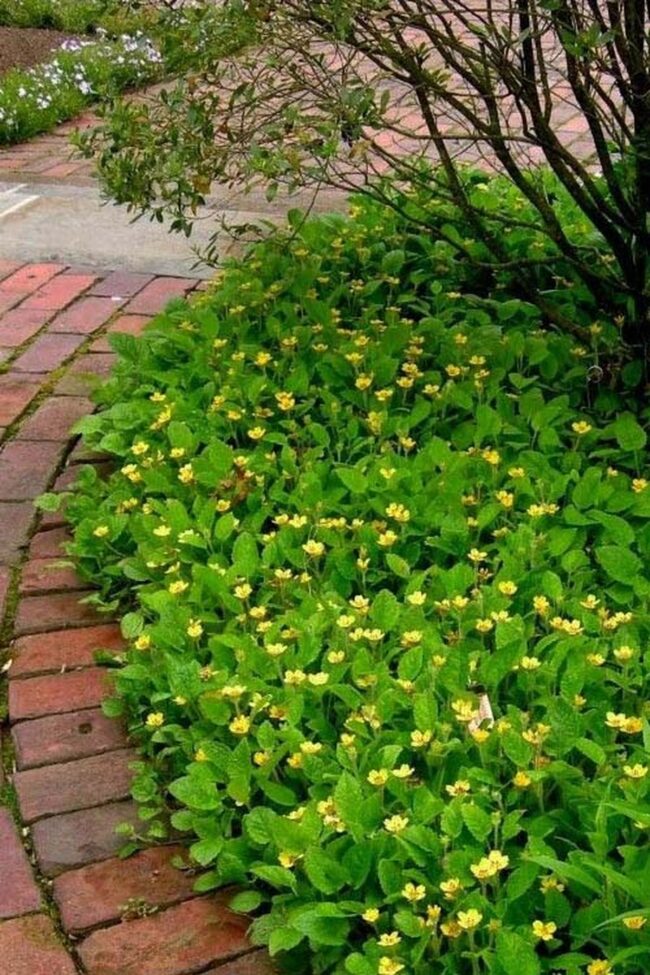
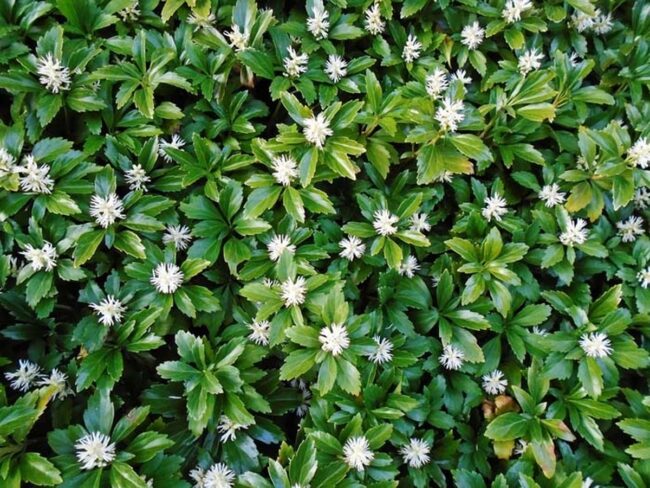
Liam Patel
Senior Editor & DIY Craftsman
Expertise
DIY home decor, interior design, budget-friendly styling, sustainable upcycling, creative crafting, editorial writing
Education
Pratt Institute, Brooklyn, NY
Liam Patel is the Senior Editor at Archeworks.org, where he shares creative DIY and home decor ideas. With a degree in Interior Design and years of experience in home styling, Liam focuses on easy, budget-friendly projects that make spaces personal and beautiful.
Liam’s tutorials, styling tips, and affordable solutions help readers design homes they love. He believes decorating is about self-expression and encourages everyone to embrace the joy of creating.